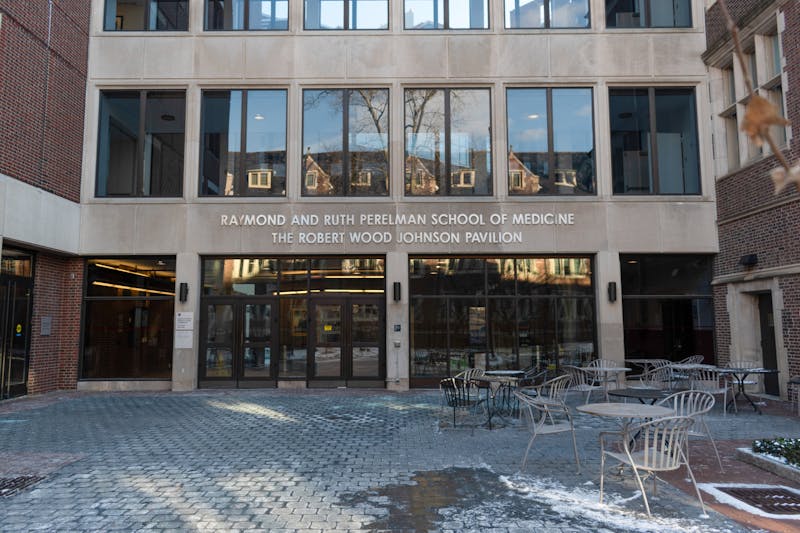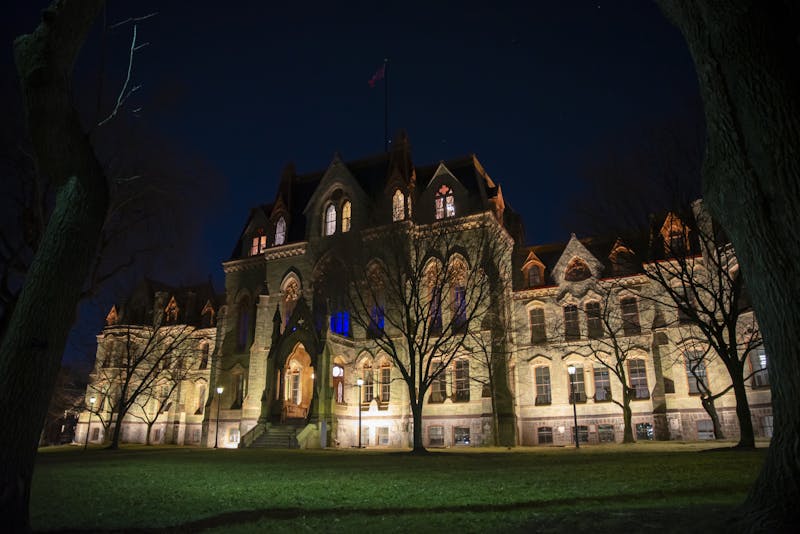Last night, Jules de Balincourt paid a visit to the Institute of Contemporary Art to give a talk as part of PennDesign’s Fine Arts lecture series. Born in Paris, he has successfully exhibited his work in numerous well-known galleries in New York, where he currently resides.
De Balincourt’s art contains bold images and many of his paintings are very large in size.
However, he likes to keep his work very simple.
His art focues on “what it means to be an artist living in the 21st century,” he quipped.
This is very much true of his work, which is a curious mix of abstraction and representation. He explained that ‘meaning’ isn’t central to his art, but he feels a slight resentment towards the purely abstract.
When a member of the audience pressed him further on this point, de Balincourt said, “What is really abstraction? If you zoom into this human, it’s simply abstract. You can’t ‘reinvent’ abstract painting.”
Some personal musings aside, the artist also took the time to present and expand on many of his works. A prominent feature throughout his talk was ambiguity. One of his paintings, “The People Who Play and The People Who Pay,” plays with the juxtaposition to which its title refers, depicting tourists having a good time at a resort.
Map-making is also a topic of special interest to de Balincourt. One of his paintings, titled “African-American Studies,” consists entirely of a map of Africa inside a map of the United States. Still, it wasn’t without the artist’s signature bright colours and abstractive elements.
In addition, as they did for many around the world, the Sept. 11 attacks impacted de Balincourt deeply. They occurred just after two months after his arrival in New York, he said.
Quite a number of his paintings have thus included themes along the lines of war, soldiers, revolution and a possible hint of tyranny. But he explained that he had an easy-going attitude towards these themes.
“For me,” he said, ‘the personal and political coexist.”
Moving away from the subject of his work, de Balincourt also discussed his view on art schools, whose ultimate value he has often questioned.
He explained that “sometimes, things [at art schools] can get overtly intellectual where they get you to read all this stuff while you sit there wondering, ‘Where’s the art?’ The irony of art school is that a large portion of it doesn’t actually involve art.”
This statement produced instantaneous applause from the audience, indicating possibly that he had given voice to a widely held frustration.
Finally, de Balincourt spoke out about his Paris-California-New York identity.
He said that all three places play an integral role in his painting.
As he puts it, though, his work is like “Yin and Yang, a paradox.”
The Daily Pennsylvanian is an independent, student-run newspaper. Please consider making a donation to support the coverage that shapes the University. Your generosity ensures a future of strong journalism at Penn.
DonatePlease note All comments are eligible for publication in The Daily Pennsylvanian.







